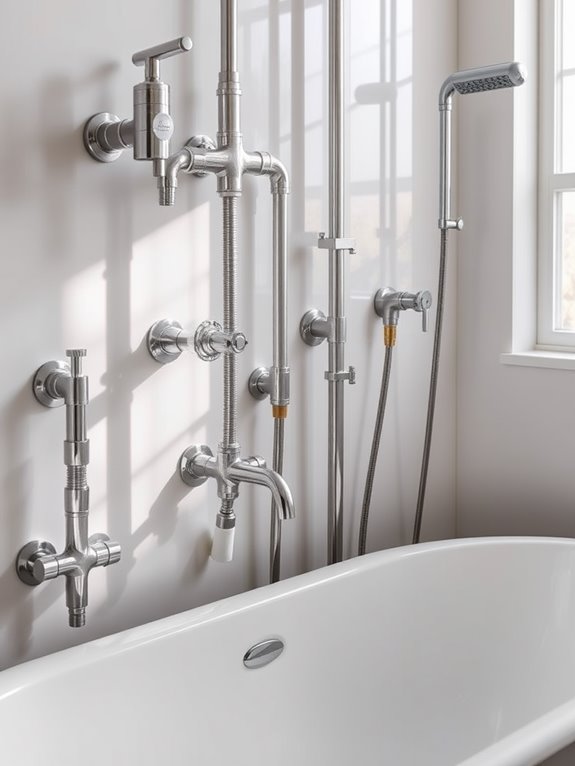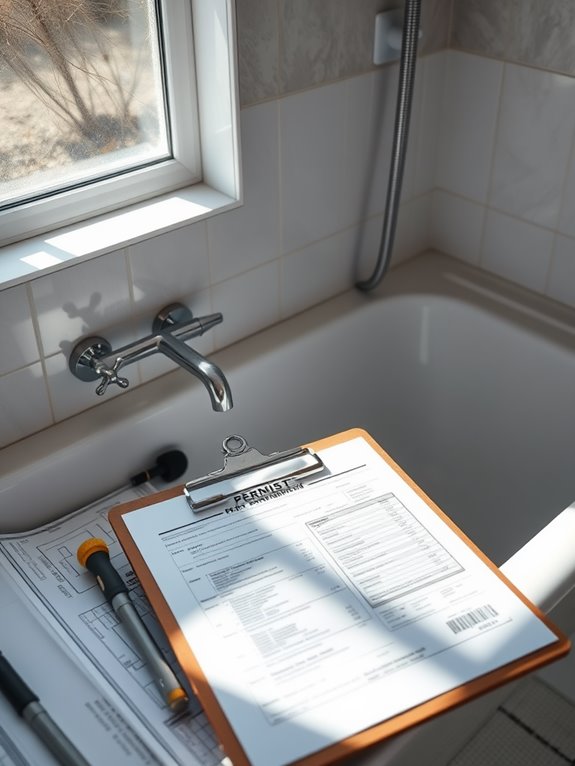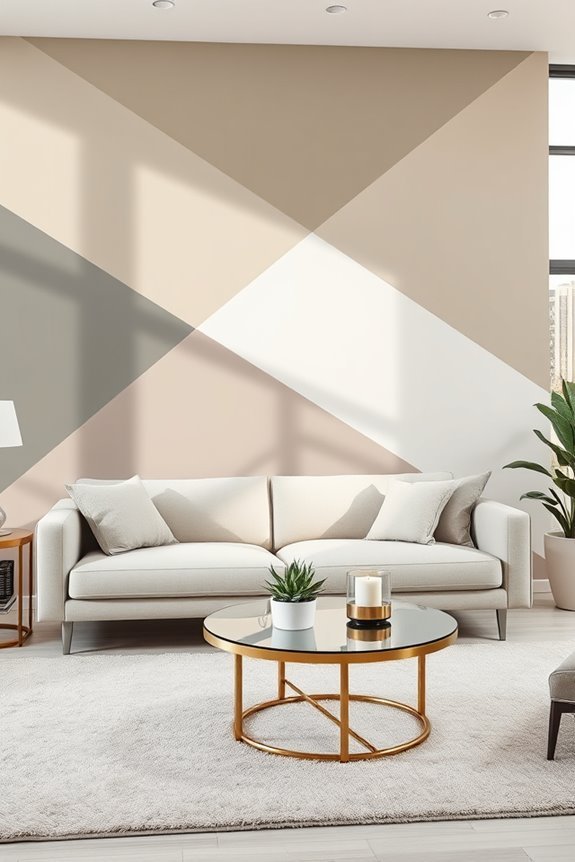How Much Does Bathroom Plumbing Cost? A Breakdown of Expenses
Bathroom plumbing costs can really vary based on several factors, like fixture choices and installation complexity. On average, faucets range from $50 to $300, while toilets might cost anywhere from $100 to $1,000. Labor charges typically fall between $100 and $500, and don’t forget about permit fees, which can add another $50 to $200. By being aware of these expenses, you can better budget for your project. Want to find out more about saving on these costs?
Factors Influencing Bathroom Plumbing Costs

When planning a bathroom renovation, understanding the factors that influence plumbing costs can save you a lot of money.
First, the complexity of your plumbing layout plays a vital role; if you’re relocating fixtures, expect higher costs.
Second, the age and condition of your existing plumbing matter—old pipes might need replacement or repairs.
Third, local labor rates vary greatly, so consider hiring a licensed plumber who knows your area.
Finally, permits and inspections can add to your expenses, especially in older homes.
Average Cost of Plumbing Fixtures
When planning your bathroom renovation, understanding the average cost of plumbing fixtures is essential.
You’ll find various fixture types, each with different price ranges, and installation costs can add up quickly.
Don’t forget to take into account additional accessories that might enhance your space, as they can impact your overall budget.
Fixture Types and Prices
Choosing the right plumbing fixtures is essential for any bathroom renovation, and understanding their costs can help you budget effectively.
The average price for faucets ranges from $50 to $300, while showerheads typically cost between $30 and $200.
Toilets can vary greatly, with prices ranging from $100 to $1,000, depending on style and features.
Bathtubs usually fall between $300 and $1,500, while sinks can cost anywhere from $100 to $600.
Don’t forget about additional items like vanities and storage solutions, which can add another $200 to $1,200.
Knowing these ranges helps you make informed decisions for your project.
Installation Costs Overview
Understanding the costs associated with installing plumbing fixtures is just as important as selecting the right ones.
When you’re budgeting, consider that installation costs can vary greatly based on the type of fixture and your location. On average, you might spend between $100 to $500 for labor, depending on the complexity of the job.
Factors like removing old fixtures or modifying plumbing lines can add to your expenses. Additionally, some fixtures may require specialized installation, which can further increase costs.
Always get multiple quotes from professionals to guarantee you’re making a well-informed decision for your bathroom upgrades.
Additional Accessories Expenses
While you may focus on major fixtures, don’t overlook the costs of additional accessories that can enhance your bathroom’s functionality and style.
These items can add up quickly, so it’s important to budget accordingly. Here’s a breakdown of average costs:
- Towel Bars: $20 – $100
- Shower Curtains: $15 – $70
- Toilet Paper Holders: $10 – $50
- Vanity Mirrors: $50 – $300
Investing in quality accessories can elevate your space, but be mindful of these expenses to keep your bathroom renovation within budget.
Installation and Labor Costs

When planning a bathroom renovation, you’ll find that installation and labor costs can considerably impact your overall budget.
Hiring a licensed plumber typically ranges from $45 to $200 per hour, depending on their experience and your location. Additionally, you might face flat fees for specific projects, like installing fixtures or rerouting pipes.
If you’re tackling a complete renovation, consider costs for demolition and disposal, which can add up quickly.
Always get multiple quotes to compare prices and guarantee you’re getting a fair deal. Factor in these expenses to avoid budget surprises and keep your project on track.
Common Plumbing Repairs and Their Costs
Many homeowners face plumbing issues that require prompt attention, and knowing the common repairs along with their costs can help you budget effectively.
Here’s a quick overview of typical plumbing repairs and their estimated costs:
- Leaky faucet: $150 – $300
- Clogged drain: $100 – $250
- Running toilet: $100 – $200
- Pipe leaks: $150 – $500
Permits and Inspection Fees

When planning your bathroom plumbing project, you’ll need to take into account local permit requirements that can vary by area.
These permits often come with their own fees, and you should factor in the costs for inspections as well.
Understanding these expenses upfront can help you budget more effectively.
Local Permit Requirements
Understanding local permit requirements is essential, as failing to secure the necessary approvals can lead to costly fines or delays in your bathroom plumbing project.
To navigate this process smoothly, follow these steps:
- Check Local Regulations: Research your city or county’s plumbing codes.
- Apply for Permits: Submit the required paperwork to the local authority.
- Pay Fees: Be prepared to cover any associated permit fees.
- Keep Records: Maintain all documentation for future reference.
Inspection Cost Breakdown
After securing the necessary permits, you’ll need to contemplate the costs associated with inspections.
Inspection fees can vary based on your location and the complexity of your plumbing work. Typically, you might pay anywhere from $50 to $200 per inspection. Some municipalities charge a flat rate, while others have tiered pricing depending on project size.
Remember, multiple inspections may be required at different stages of your project, so factor in these costs when budgeting.
Don’t forget to confirm if any additional fees apply for re-inspections, as those can further impact your overall expenses.
Planning ahead will save you surprises later!
Tips for Reducing Bathroom Plumbing Expenses
To keep your bathroom plumbing costs in check, it’s essential to tackle small issues before they escalate into major repairs.
Here are some tips to help you save money:
- Inspect for leaks regularly; even a small drip can lead to big costs.
- Unclog drains before they back up, using natural methods like baking soda and vinegar.
- Install low-flow fixtures to minimize water usage and lower bills.
- DIY minor repairs when possible, like replacing washers or caulking.
Conclusion
In the world of bathroom plumbing, it’s true what they say: “A penny saved is a penny earned.” By understanding the factors influencing costs and doing your research, you can make informed decisions that keep your expenses in check. Whether it’s choosing the right fixtures or tackling repairs yourself, every little bit helps. With a bit of planning and savvy choices, you can create a functional bathroom without breaking the bank. Happy plumbing!



